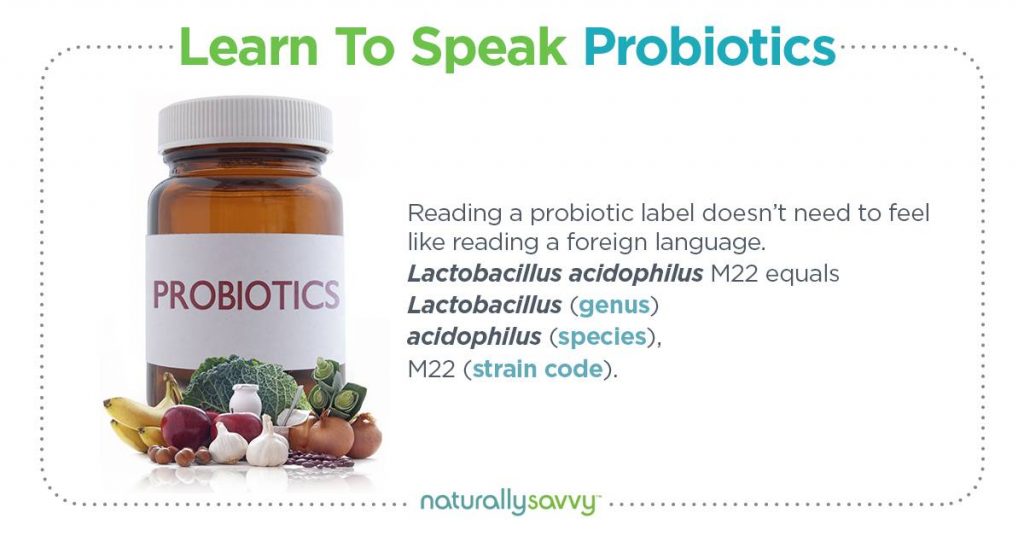
Probiotics are popular. According to research, the global probiotics market was determined to be $48.38 billion in 2018 and is projected to reach $75.9 billion by 2027. That’s a lot of good bacteria! But how do you know which probiotics are right for you and your family?
What are probiotics?
Probiotics are live beneficial bacteria (and some yeasts) that naturally reside in your body. They are part of your microbiome, which consists of a more diverse population of microorganisms, including bad bacteria, fungi, viruses, and protozoa. It’s important to keep a healthy level of beneficial bacteria in your body to help fight off the bad ones and help you support and maintain optimal health.
Read about 8 reasons to take probiotics
Probiotics are primarily located in the gut, but they are also found in the mouth, vagina, skin, urinary tract, and lungs. That means if you have, say, a vaginal infection, taking a probiotic supplement may help remedy that situation. In fact, the main job of probiotics is to keep a healthy balance in your body. They do this in a number of ways:
- Helping with digestion
- Supporting immune function
- Controlling inflammation
- Making vitamins
- Breaking down and absorbing nutrients and medications
- Keeping bad bacteria from causing illness and disease
Types of probiotics
Each type of probiotic is identified by three characteristics: genus, species, and strains. The genus is the overall class that a probiotic belongs to such as the Lactobacillus genus. Within the genus, there are distinct species like acidophilus. The classification goes even further and each probiotic will have a strain code, usually, a letter and numbers that identify it further. It’s important that all three are used on the label to identify a good quality probiotic.

The most common and more studied probiotics include the following genus:
- Lactobacillus is the predominant bacteria in the small intestine. The Lactobacillus species produce an enzyme that breaks down the sugar in milk and also ferments carbs in the gut, which in turn creates lactic acid. This acid helps create a favorable environment in the gut for digestion, wards off unwanted microorganisms, and boosts the absorption of minerals. Includes L. acidophilus, L. fermentum, L. plantarum, L. salivarius, L. rhamnosus, L. gasseri, L. paracasei, and L. reuteri.
- Bifidobacterium can be found in the large intestine and helps ward off various harmful microorganisms. This genus also produces lactic acid, which works to prevent the growth of bad bacteria, helps with mineral absorption, and produces vitamin K and B vitamins. The species include B. bifidum, B. longum, and B. infantis.
- Streptococcus is found in the mouth. Two species are S. salivarius K12 and S. salivarius M18.
- Bacillus bacteria, also produce lactic acid. These spore-bearing bacteria are highly resistant to moisture, light, and heat, which makes them very resistant to stomach acid and easy to colonize in the small intestine. The probiotic is B. coagulans.
Choosing probiotics for you and your family
If you go to a nutrition store, pharmacy, grocery store, or online supplier, you will see many probiotic supplements with different good bacteria listed on the label. How do you know which species are right for you? We’re going to make it easier for you to select the best probiotic supplement for you and your family. Here are some general guidelines based on life stages and needs.
Read about maximizing your probiotics for immune health
Older adults: As we age, levels of Lactobacillus and Bifidobacterium decline. Since these genera are known for maintaining immune function, gut health, and healthy inflammation, look for products containing them. Research appearing in the Journal of the American College of Nutrition showed that a probiotic mixture of three strains–L. gasseri, B. bifidum, and B. longum–when compared with placebo was beneficial for immune health and inflammation. Overall, the probiotics changed the microbiome of the volunteers to that similar to younger people.
Children and adults: If you are looking for a general maintenance probiotic supplement that is suitable for adults and children, look for a blend of three biocompatible probiotics: L. gasseri, B. bifidum, and B. longum. These strains have been widely researched and support immune function and a healthy gut environment, which includes digestive and intestinal health. The suggested dose for children is 1 billion CFUs and 2 to 3 billion CFUs for adults.
Digestive/gut health: For general maintenance of digestive and gut health, a blend of L. gasseri, B. bifidum, and B. longum is recommended. Dosing is 1 billion CFUs for children and 3 to 6 CFUs for adults. For stronger gut support, a blend of the aforementioned three bacteria plus B. lactis, B. breve, B. infantis, and L. rhamnosus is suggested at a dose of 6 billion CFUs. For maximum restoration of the gut microbiome, a blend of the seven strains mentioned here plus L. acidophillis, L. plantarum, and L. paracasei is recommended at a dose of 50 CFUs.

Allergy relief: Seasonal allergies can affect people of any age and can be very disruptive to daily activities. In a double-blind, placebo-controlled clinical trial, researchers found that the probiotic combination of L. gasseri KS-13, B. bifidum G9-1, and B. longum MM-2 improved the quality of life among individuals who took this supplement.
Liver and detoxification: If you are looking for support for liver function and/or detoxification, L. paracasei, B. longum, and L. fermentum are suggested.
Oral health: To support and promote oral health, look for supplements with L. salivarius, L. reuteri, and S. salivarius K-12 and M-18.
Vaginal and/or urinary health: For vaginal and urinary tract support, look for L. acidophilus, L. rhamnosus, L. gasseri, and B. coagulans.
Bottom line
People of all ages can enjoy the health benefits of probiotics, whether they are taken to help maintain digestion, immune function, and overall health, or to support healing of common health challenges, such as allergies, vaginal or urinary tract infections, or detoxification.








